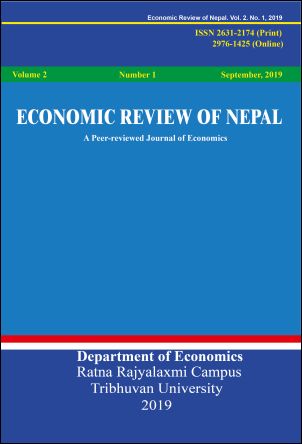Resource Gap Analysis in Nepalese Budgetary System
DOI:
https://doi.org/10.3126/ern.v2i1.53105Keywords:
national income, saving, capital formation, budget, deficit financingAbstract
Resource gap analysis in the Nepalese budget system has attempted to focus on both the situation at the current level and the estimated future value. Therefore, the study has applied both the OLS and ECM models, to look at the GNS and GCF relation to GNI. The result has been compared to the current situation and the target level of performance in the future. With the analysis of unexplained residual factors, RGA in budgetary operation has been examined between GNI as a resource and what rate of resource would be needed to satisfy future needs at the national level. However, these models gave the same conclusion that resource gaps have got irregular with the rate of 12 per cent speed of disequilibrium. With this performance of resource gap, the government agency and others rigorously understood the resource it currently has and the need for resources to meet the goal. The forecasting further would also provide valuable suggestions for expanding other areas of development by diverting their capacity to correct the resource gap in the budgetary system.
Downloads
Downloads
Published
How to Cite
Issue
Section
License
This license enables reusers to distribute, remix, adapt, and build upon the material in any medium or format for noncommercial purposes only, and only so long as attribution is given to the creator.




